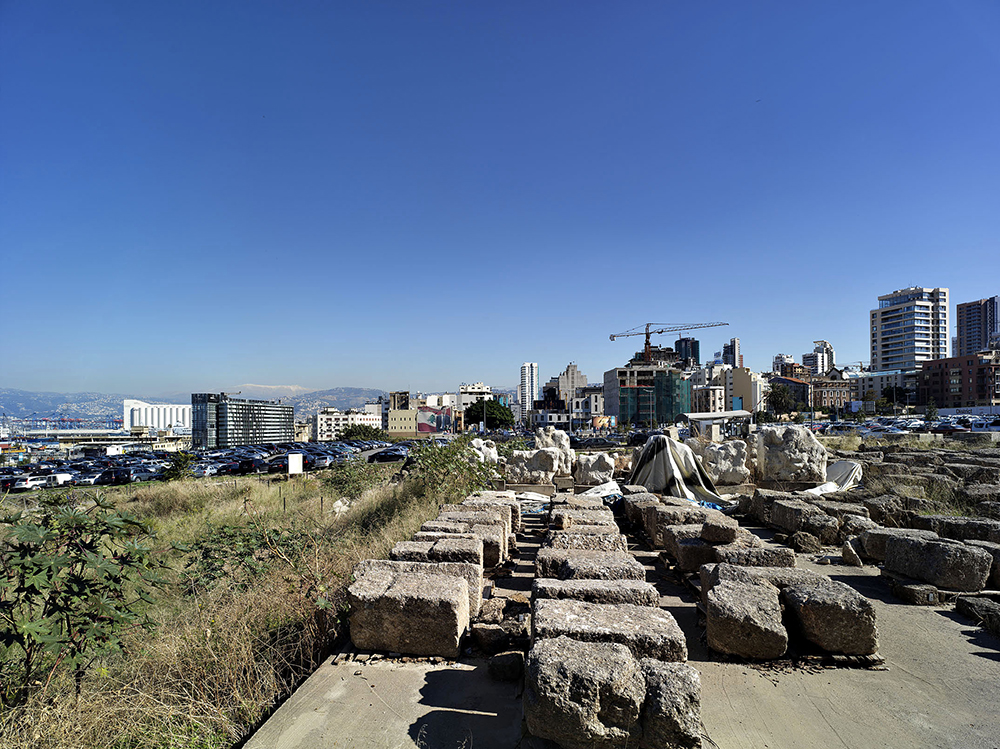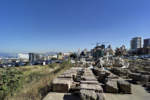In the early Nineties Beirut became the world’s biggest archaeological site, with almost one hundred and fifty excavations. In fact, the urgent need to rebuild the city in the years after the war has entailed major infrastructural projects and developments, of dimensions hitherto unseen in the Lebanese capital.
The history of this city, unappreciated for a long time, has thus come to the forefront and has been confirmed by an abundance of excavations, all of them executed within the general context of so-called “rescue excavations”.
The urban excavation works, controlled by the General Direction of Antiquities with the technical assistance of the Unesco, have been conducted in the course of several years by a new generation of urban archaeologists.
The future of the exceptional vestiges (ramparts from the Bronze Age, Greek towers and districts, large sectors of the Roman colony of Berytus, various aspects of the Byzantine city, Medieval and Mamluk fortifications) discovered during the numerous excavations poses an eternal debate: to what point is it necessary to protect testimonials of history in the city of the future? What are the orientations of official politics? Since 1993 awareness creation, interpretations and vindications have all stoked the debate, sometimes even virulent, especially due to the participation of the media. However, the interest in the archaeology has ebbed out little by little due to the lack of information and concrete implications for the civic society. The open-air in situ exhibition of the rests discovered during these years to some extent reflects an evolution of a mentality that has not been accompanied by an identical legislative change.
The main options on the table are as follows:
Irreversible removal of the rest, following a documentary survey of the archaeology of the site under the scientific aegis of the competent authorities. This is the destiny of most of the finds.
On-site preservation. This is the preferable option in case of exceptional sites and vestiges of indisputable importance for the local history. This option has been subject of intense negotiations ever since 1995 in relation to the excavations of the Tell of Beirut, where the impressive vestiges of Biruta from the Bronze Age have been uncovered next to the foundations of the Medieval castle. This has also been the preferred option for the medieval ramparts, and the Phoenician district, both located in the area of the new Souks. However, the selection criteria adopted have not been clearly indicated. This type of preservation requires close coordination with future projects (modification or abandonment of architectural plans): in the form of partial or total replacement of a site, passive conservation has been practiced in the Garden of Forgiveness in the Churches’ district, where the vegetation has rapidly gotten the upper hand.
Scientific disassembly and partial reassembly ex-nihilo: this option consists of a compromise between on-site preservation and definitive disassembly, and may be an interesting solution when it is adopted with every scientific and moral guarantee.
The vestiges of the Decumanus Maximus (roman road), removed from underneath the Mosque of Mohamad El Amine, or the Greek quarters in the centre of the Martyrs’ square, are still awaiting a better future under the open sky. Sites where integration is finally achieved after a long awareness-creating process, has convinced the owners of the added value thus obtained inevitably lose their original authenticity. Sometimes, archaeological remains become mere ornamental elements rather than fragments of urban history accessible to everyone. This possibility, which seemed practically impossible just a few years ago, has become quite common, even if this has not served to make the vestiges found in the city clearly legible: with a few exceptions, most of the testimonials that have been ‘reintegrated’ are practically inaccessible to the general public.
One may to a certain extent ask oneself whether the option of removal and installation elsewhere is not justified in every case, even when one is not concerned with exceptional conditions defined by international conventions, applicable to sites facing imminent dangers (as in the case of the temples of Abu Simbel, Aswan Dam, Egypt 1964).
Yasmine Makaroun Bou Assaf is an architect-restorer specialized in built-up heritage and archeological site management. With a PHD in Bronze Age Archaeology, she has been involved in Beirut’s excavations since 1993. As a full time teacher at the Lebanese University (Lebanon) and free lance consultant, she has conducted many projects in the field of restoration and conservation.






